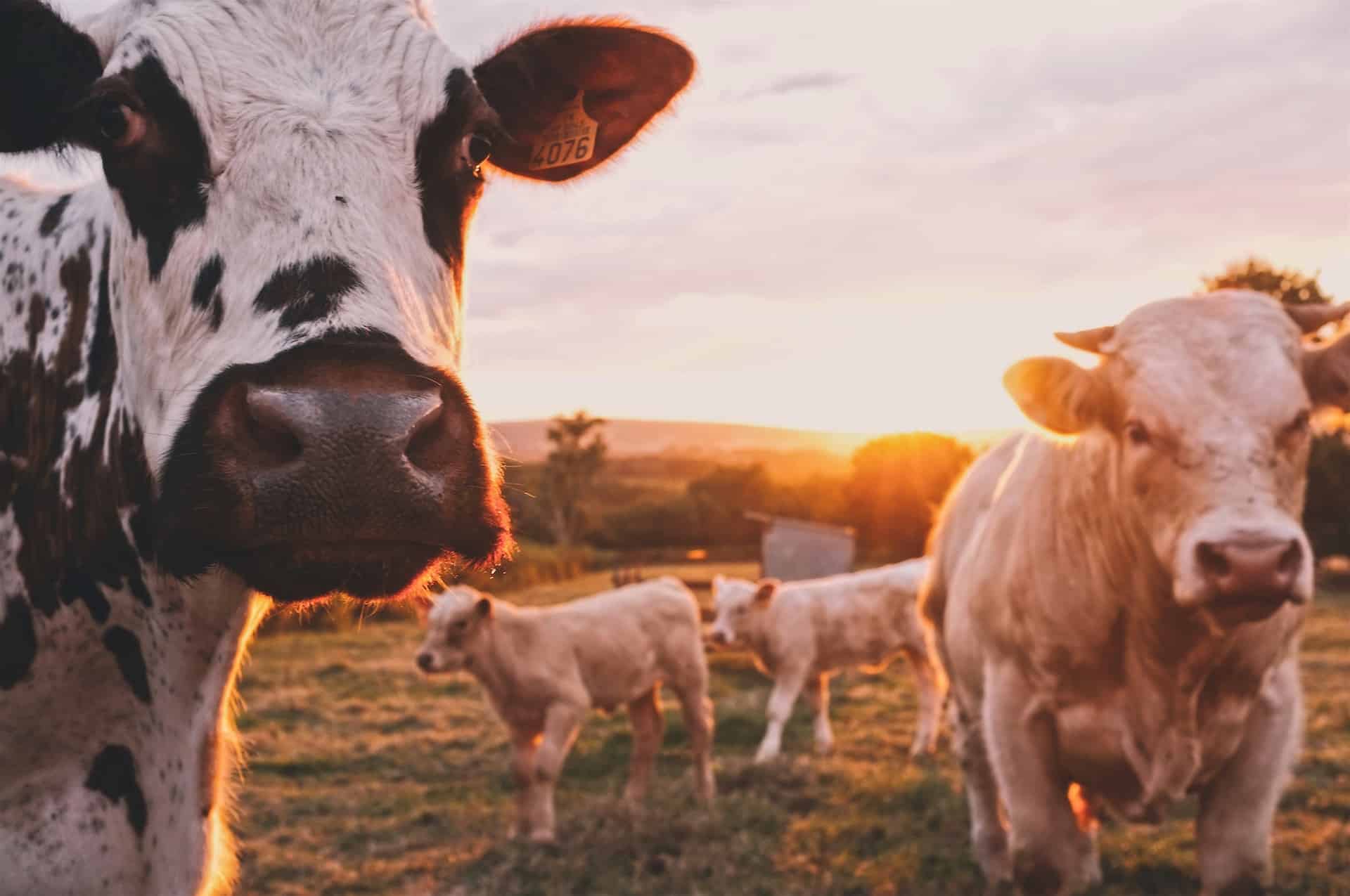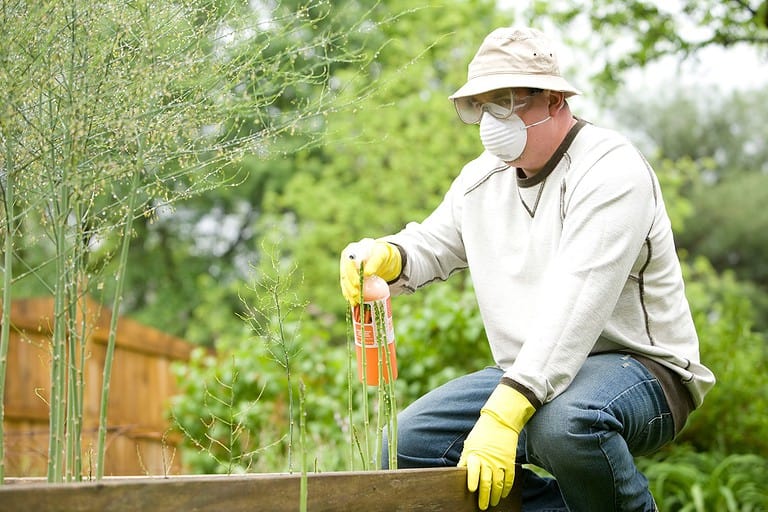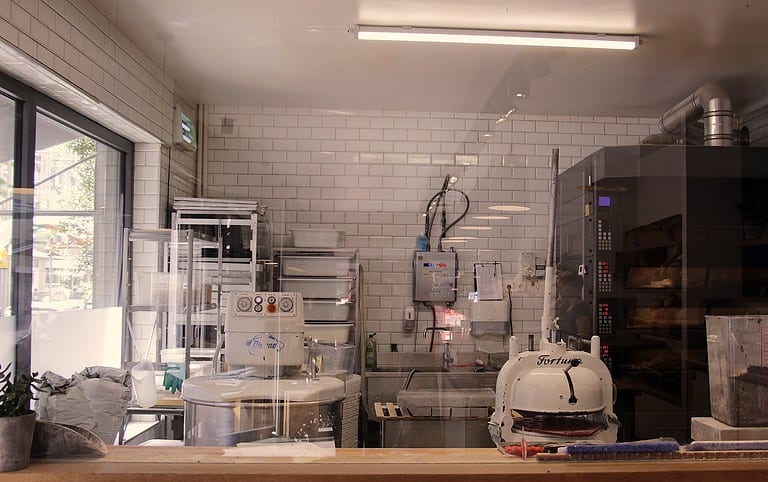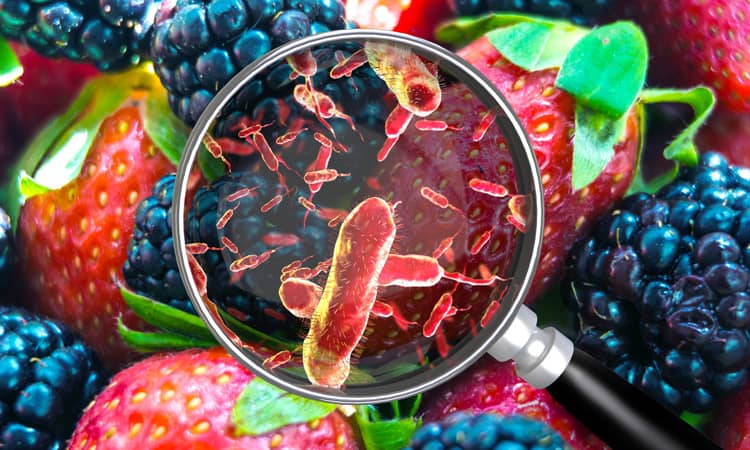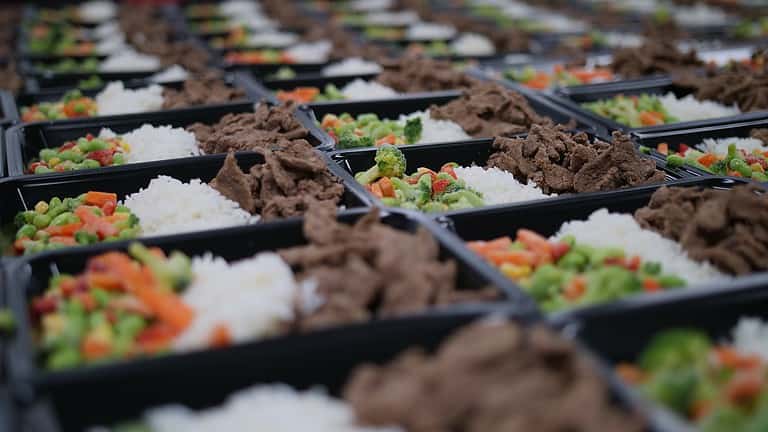Food Safety and Supply Chain: Key Points to Ensure Safety from Farm to Table
As someone who is passionate about food safety, I believe it is important to understand the complexities of the food supply chain. The food supply chain is a complex network of farmers, manufacturers, distributors, retailers and consumers. It involves the production, processing, packaging and distribution of food products from farm to table.
Ensuring the safety of our food supply chain is critical to protecting public health. Foodborne illnesses can have serious consequences, ranging from mild symptoms to hospitalization and even death. The Centers for Disease Control and Prevention (CDC) estimates that each year, 48 million people in the United States get sick from a foodborne illness, 128,000 are hospitalized, and 3,000 die. These illnesses can be caused by a variety of factors, including contamination during production, improper storage or handling and inadequate cooking or processing.
Therefore, it is crucial that we have effective measures in place to monitor and secure the food supply chain. This includes implementing food safety regulations, conducting regular inspections, and developing new technologies to improve traceability and transparency. By working together across the food supply chain, we can help to ensure that the food we eat is safe and healthy for everyone.
Supply Chain Management
As a food safety professional, I understand the importance of maintaining a safe and secure supply chain. Supply chain management involves the coordination of all activities involved in the production, processing, distribution and consumption of food products. It is essential to ensure that all steps in the supply chain are carried out in a way that protects the safety and quality of the food products.
Traceability
Traceability is a critical aspect of supply chain management. It refers to the ability to track the movement of food products from the point of origin to the point of consumption. This is important for several reasons. First, it helps to identify the source of any contamination or other safety issues that may arise. Second, it allows for prompt action to be taken to prevent the spread of any safety concerns. Finally, it provides consumers with the confidence that the food they are consuming is safe and of high quality.
To ensure traceability, it is essential to implement a robust system of record-keeping. This includes maintaining accurate records of all suppliers, ingredients and processes involved in the production of food products. It also involves the use of technologies such as barcodes, RFID tags and blockchain to track the movement of food products throughout the supply chain.
In addition to record-keeping, it is also important to have clear procedures in place for responding to any safety concerns that may arise. This includes protocols for identifying the source of contamination, recalling products and notifying relevant authorities and stakeholders.
Overall, effective supply chain management is essential for ensuring the safety and quality of food products. By implementing robust traceability systems and clear procedures for responding to safety concerns, we can help protect consumers and maintain the integrity of the food supply chain.
Food Safety and Transportation
As a food safety professional, I understand the importance of proper food transportation to ensure that food products remain safe and fit for consumption. Food transportation involves moving food products from the producer to the consumer, and it is a crucial step in the food supply chain.

To maintain food safety during transportation, it is important to follow certain guidelines. Here are some key considerations:
- Temperature control: Food products must be transported at the appropriate temperature to prevent spoilage and contamination. Chilled and frozen foods should be delivered in refrigerated vans or using cool bags and boxes to ensure that they do not become unsafe or unfit to eat.
- Packaging: Food products should be packaged properly to prevent contamination and damage during transportation. Packaging should be sturdy and secure, and it should be designed to protect the food products from moisture, pests and other potential hazards.
- Traceability: Traceability is essential to ensure that food products can be traced and followed through all stages of production, processing and distribution. This helps to identify any potential issues or problems with the food products and enables quick action to be taken to prevent any harm to consumers.
- Hygiene: All vehicles used for food transportation should be clean and well-maintained to prevent contamination. Drivers and other personnel involved in food transportation should follow good hygiene practices, including washing their hands regularly and wearing appropriate protective clothing.
Food safety during transportation is critical to ensure that food products remain safe and fit for consumption. By following guidelines for temperature control, packaging, traceability and hygiene, we can help prevent food contamination and ensure that consumers can enjoy safe and healthy food products.
Food Safety and Storage
As someone who is also concerned about food safety at home, I understand the importance of proper storage to prevent foodborne illnesses. Storing food following the correct guidelines can slow down the growth of bacteria, which is essential in preventing food poisoning. Here are some tips for proper food storage:
- Refrigerate perishable foods promptly: Perishable foods such as meat, poultry, fish, dairy products and eggs should be refrigerated within two hours of purchase or preparation. If the temperature outside is above 90°F (32°C), refrigerate within one hour.
- Store food at the correct temperature: The temperature inside your refrigerator should be set at 40°F (4°C)or below, and the temperature inside your freezer should be set at 0°F (-18°C) or below. Use a thermometer to check the temperature.
- Separate raw and cooked food: Raw meat, poultry and seafood should be stored separately from cooked food to avoid cross-contamination. Use separate cutting boards, utensils and containers.
- Label and date food: Label and date food before storing it in the refrigerator or freezer. Use the oldest food first to avoid food waste.
- Use airtight containers: Store food in airtight containers to prevent contamination and keep food fresh.
- Don’t overpack the refrigerator: Overpacking the refrigerator can prevent air from circulating, which can lead to uneven cooling and potential food spoilage.
- Check for spoilage: Check food for spoilage before eating it. If it looks or smells bad, throw it away.
By following these simple tips, I can ensure that the food I store in my refrigerator and freezer is safe to eat and free from harmful bacteria.
Food Safety and Distribution
As a food safety expert, I understand the importance of maintaining safety throughout the entire food supply chain. One critical aspect of food safety is distribution. Once food is produced, it must be transported to its final destination, whether that be a grocery store, restaurant or other food service establishment. During this process, there are several potential hazards that must be addressed to ensure the safety of the food.
One of the biggest risks during distribution is temperature abuse. If food is not kept at the proper temperature during transport, it can cause rapid spoilage of food due to the accelerated activity of any harmful bacteria and other pathogens that may be possibly present. To mitigate this risk, it is essential to use appropriate temperature controls, such as refrigerated trucks and insulated containers, to maintain the proper temperature throughout the entire distribution process.
Another critical aspect of food safety during distribution is packaging. Proper packaging can help protect food from contamination during transport. It is essential to use packaging that is appropriate for the type of food being transported and that meets all relevant safety standards.
In addition to temperature control and packaging, it is also crucial to ensure that all personnel involved in the distribution process are properly trained in food safety practices. This includes drivers, handlers and other personnel who come into contact with the food during transport. Proper training can help prevent contamination and ensure that food is handled safely throughout the entire distribution process.
Overall, food safety during distribution is a critical component of maintaining a safe and healthy food supply chain. By implementing appropriate temperature controls, using proper packaging, and ensuring that all personnel are properly trained, we can help prevent contamination and ensure that food is safe for consumption.
Food Safety and Retail
As a food safety expert, I understand how important it is to ensure that food products are safe for consumers to eat. This is especially crucial in the retail industry, where food products are sold directly to consumers. In this section, I will discuss some of the key challenges and strategies for ensuring food safety in retail.
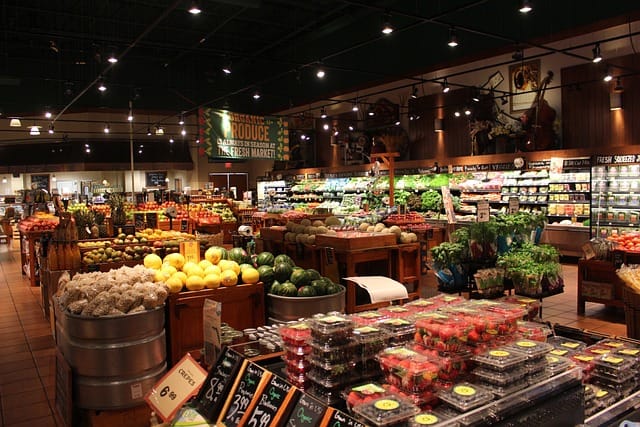
One of the biggest challenges in retail food safety is ensuring that products are properly labeled and stored. Retailers need to ensure that products are labeled with accurate information, including ingredients, nutritional information and allergen warnings. They also need to ensure that products are stored at the correct temperature and that they are not contaminated by other products in the store.
To address these challenges, retailers can implement a number of strategies. For example, they can use technology such as RFID tags to track products throughout the supply chain and ensure that they are properly labeled and stored. They can also implement training programs for employees to ensure that they are aware of food safety regulations and best practices.
Another important strategy for ensuring food safety in retail is implementing a Hazard Analysis and Critical Control Points (HACCP) program. HACCP is a systematic approach to identifying and controlling food safety hazards. By implementing a HACCP program, retailers can identify potential hazards and take steps to prevent them from occurring.
Finally, retailers can work with suppliers and other stakeholders in the supply chain to ensure that food products are safe. This includes working with suppliers to ensure that they are following best practices for food safety and quality control, as well as collaborating with other retailers and industry organizations to share information and best practices.
Overall, ensuring food safety in retail is a complex and ongoing process. However, by implementing the right strategies and working with stakeholders throughout the supply chain, retailers can help to ensure that consumers have access to safe and high-quality food products.
Food Safety and E-commerce
As a food safety professional, I am aware of the challenges that e-commerce presents to food safety. E-commerce has revolutionized the way we shop and the way we buy food. However, it has also brought new risks to the food supply chain, including the potential for foodborne illness.
One of the biggest challenges with e-commerce is the lack of control over the supply chain. With traditional retail, food products are shipped to a store and then sold to consumers. With e-commerce, food products are shipped directly to consumers, often from multiple sources. This makes it difficult to track the origin of the food and to ensure that it has been stored and transported safely.
Another challenge with e-commerce is the potential for temperature abuse during shipping. Food products that require refrigeration or freezing can easily be exposed to temperatures that are too high or too low during shipping. This can lead to spoilage and the growth of harmful bacteria.
To ensure food safety in e-commerce, it is important to implement best practices throughout the supply chain. This includes:
- Ensuring that all food products are stored and transported at the correct temperature
- Implementing a traceability system that allows for the tracking of food products from farm to table
- Conducting regular inspections of e-commerce warehouses and distribution centers
- Providing training for e-commerce employees on food safety best practices
In addition, it is important for consumers to be aware of the potential risks associated with e-commerce and to take steps to protect themselves. This includes checking the expiration date of food products, inspecting the packaging for signs of damage or tampering, and reporting any concerns to the appropriate authorities.
Overall, e-commerce presents both opportunities and challenges for food safety. By implementing best practices throughout the supply chain and educating consumers, we can ensure that the benefits of e-commerce are realized without compromising food safety.
Food Safety and Food Service
Food safety should be of utmost importance to food service providers. Not only is it a legal obligation, but it is also a moral responsibility to their customers. Here are some of the measures that should be taken to ensure food safety in those kind of establishments:

- Regular staff training: Make sure that all the staff members are trained in food safety and handling. They are required to attend regular training sessions to stay up-to-date with the latest food safety practices.
- Proper storage: Ensure that all food items are stored at the correct temperature and in the right conditions to prevent contamination. For example, raw meat is stored separately from cooked food, and all food items are covered to prevent dust and other contaminants from entering.
- Sanitation: Regular cleaning and sanitation of the kitchen and dining areas are essential to prevent the spread of bacteria and other harmful microorganisms. All surfaces and equipment should be cleaned and sanitized regularly.
- Regular inspections: Conduct regular inspections of the establishment to ensure that all food safety practices are being followed. This includes checking the temperature of refrigerators, freezers, and hot holding units, as well as checking the cleanliness of the kitchen and dining areas.
- HACCP plan: Have a Hazard Analysis and Critical Control Points (HACCP) plan in place to identify potential hazards and take steps to prevent them. This includes regular monitoring of critical control points such as cooking temperatures and cooling times.
In addition to these measures, also working closely with the suppliers is very important to ensure that the food served is safe and of high quality. This includes:
- Supplier verification: Verify that the suppliers have proper food safety certifications and follow good manufacturing practices.
- Traceability: Keep track of the origin of all the food items received from the suppliers to ensure that they can be traced back in case of a food safety issue.
- Regular audits: Conduct regular audits of the suppliers to ensure that they are following proper food safety practices.
By following these measures, everyone should be able to provide their customers with safe and high-quality food that they can enjoy with peace of mind.
Food Safety and Agriculture
Agriculture plays a crucial role in the food supply chain and it is essential to maintain high food safety standards throughout the entire process.
Food Safety and Aquaculture
Aquaculture, or fish farming, is an essential component of the food supply chain. However, it also presents unique challenges when it comes to food safety. Fish are susceptible to bacterial infections, and if not properly handled, can pose a risk to human health.
To ensure food safety in aquaculture, it is essential to implement proper hygiene practices. This includes regularly cleaning and disinfecting equipment, ensuring proper water quality, and monitoring fish health. Additionally, implementing Hazard Analysis and Critical Control Points (HACCP) can help identify and control potential hazards in the production process.
Food Safety and Livestock
Livestock, including cattle, pigs and poultry, are also critical components of the food supply chain. However, they also pose unique food safety challenges. Livestock can carry harmful bacteria, such as Salmonella and E. coli, which can cause foodborne illness in humans.
To ensure food safety in livestock production, it is crucial to implement proper hygiene practices and biosecurity measures. This includes regularly cleaning and disinfecting facilities, providing proper nutrition and healthcare to animals, and monitoring animal health. Additionally, implementing HACCP can help identify and control potential hazards in the production process.
Ensuring food safety in agriculture is crucial to maintaining a safe and healthy food supply chain. By implementing proper hygiene practices, biosecurity measures, and HACCP, we can minimize the risk of foodborne illness and ensure that the food we eat is safe for consumption.
Food Safety and Pet Food
When I started to share my life and my living space with my beautiful pets, I have found that pet food safety is a significant concern for pet owners and regulators alike. The pet food industry is regulated by the Food and Drug Administration (FDA) and the United States Department of Agriculture (USDA). The FDA ensures that pet food is safe, nutritious, and properly labeled, while the USDA regulates the meat and poultry used in pet food.

Pet food manufacturers must comply with federal regulations, including the Federal Food, Drug, and Cosmetic Act (FFDCA) of 1938 and the Food Safety Modernization Act (FSMA) of 2011. The FSMA aims to prevent foodborne illnesses by shifting the focus from responding to contamination to preventing it. The act requires pet food manufacturers to have a written plan for identifying potential hazards, implementing preventive controls, and monitoring the effectiveness of those controls.
The pet food supply chain can be complex, with ingredients sourced from around the world. This complexity can increase the risk of contamination and make it challenging to ensure the safety of the final product. Pet food manufacturers must work closely with their suppliers to ensure that the ingredients used in their products are safe and meet their specifications.
To ensure the safety of pet food, manufacturers conduct regular testing for contaminants such as Salmonella, E. coli and Listeria. If a product is found to be contaminated, the manufacturer must take immediate action to recall the affected products.
In conclusion, pet food safety is a shared concern among pet owners, regulators and manufacturers. The pet food industry is highly regulated, and manufacturers must adhere to federal regulations to ensure the safety of their products. By working closely with their suppliers and conducting regular testing, pet food manufacturers can ensure that their products are safe and nutritious for our furry friends.
Final Thoughts
In conclusion, ensuring food safety requires a comprehensive approach that covers every aspect of the food supply chain. From the farm to the table, it is essential to have effective supply chain management, traceability, transportation, storage, distribution, retail, e-commerce, food service, agriculture, aquaculture, livestock, and pet food practices in place. By implementing robust food safety measures, we can prevent foodborne illnesses and protect public health. As a food safety expert, it is crucial to stay up to date with the latest industry standards and regulations to ensure safe and healthy food for all.

